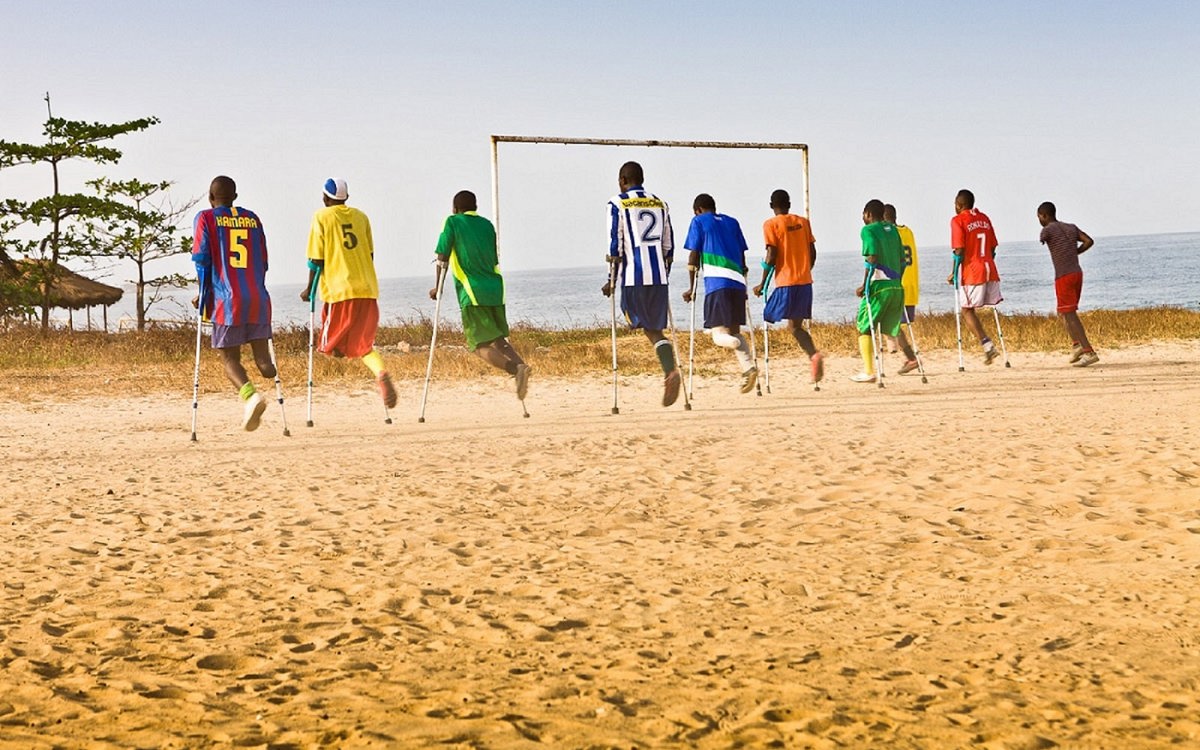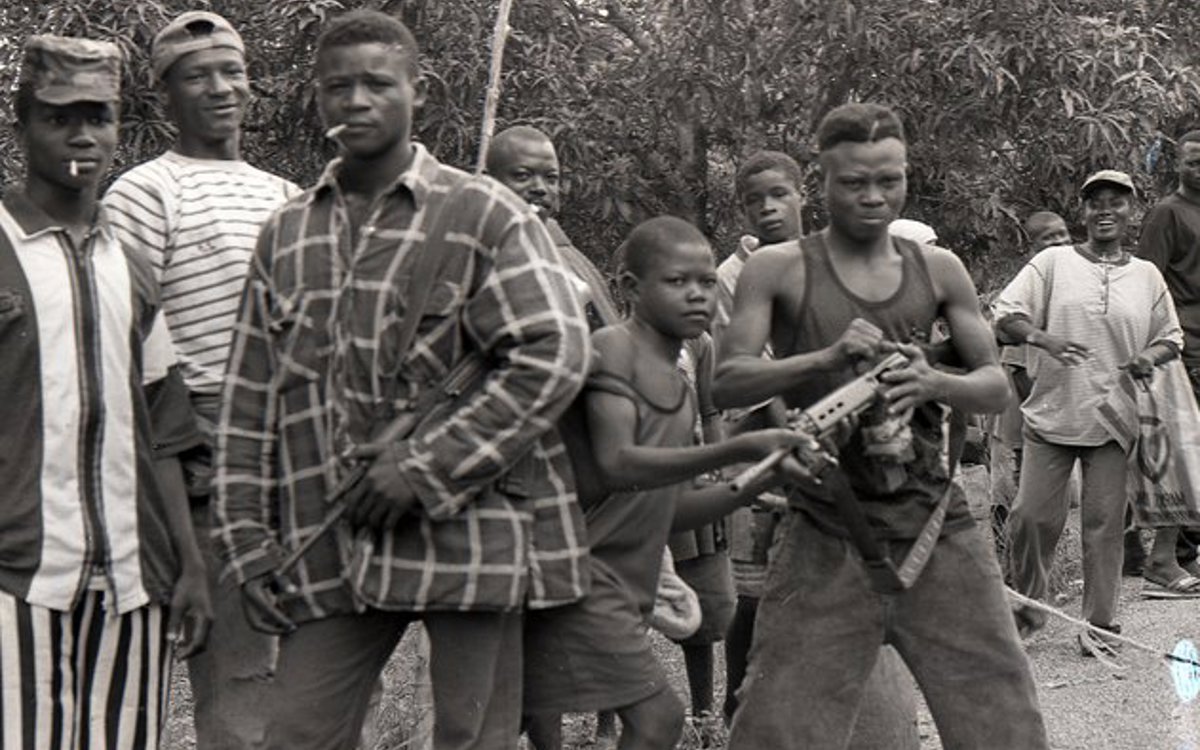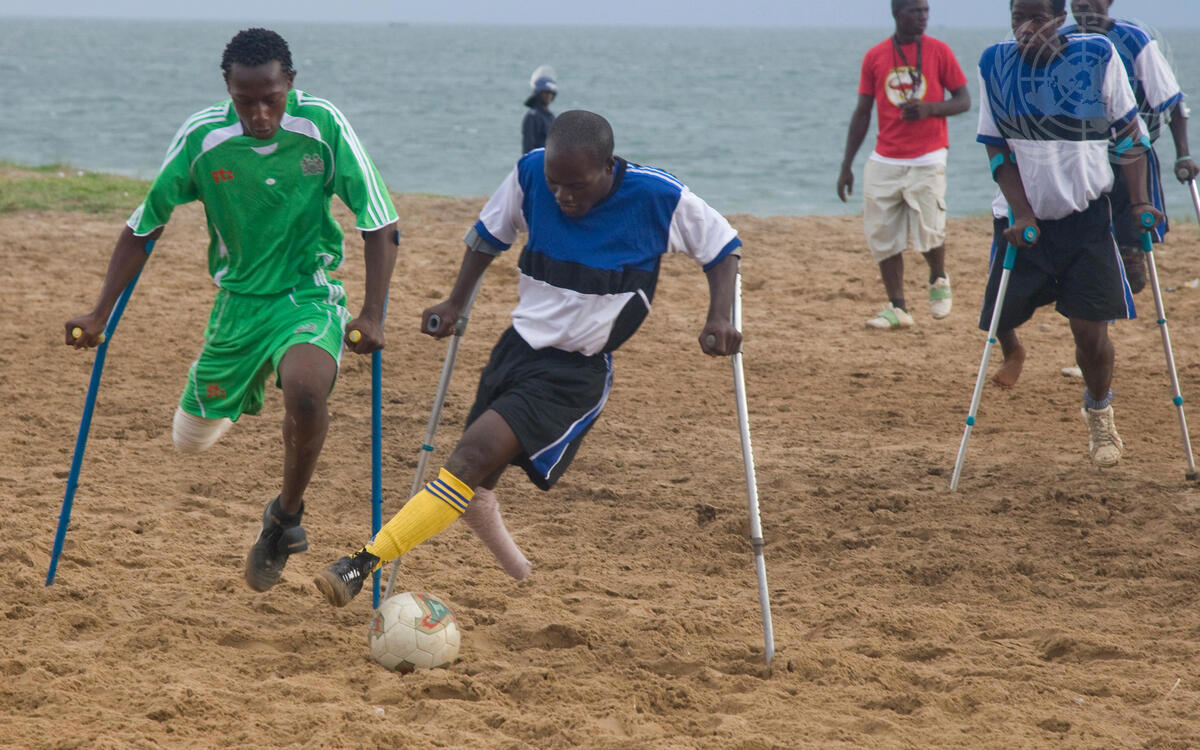When children become soldiers, can sport help them to find a way back? By Ibrahim Bangura, University of Sierra Leone

When children become soldiers, can sport help them to find a way back?
By Ibrahim Bangura, University of Sierra Leone
Between 1991 and 2002, Sierra Leone was locked in a brutal civil war in which more than 60,000 people lost their lives and around a million lost their homes. The Truth and Reconciliation Commission of Sierra Leone would later point to poverty, illiteracy, bad governance, nepotism, and corruption as underpinning the violence that engulfed the nation. These factors were coupled with the marginalisation and neglect of the country’s women and young people, who were denied the voice, identity, and recognition they deserved by a gerontocratic and patriarchal political system.
Pre-war Sierra Leone had been characterised by the dire lack of economic and recreational opportunities for the country’s young people. As confidence and trust between people and state unravelled, the pent-up frustration, anxiety, and sense of injustice built up over decades of neglect laid fertile ground for the violence to come.
All this placed Sierra Leone’s youth at the very heart of its civil war. Young people and children – some as young as eight years old – either volunteered or were abducted or exploited by the Revolutionary United Front. By the time the rebel army launched their invasion in March 1991, there was a ready-made army of young people primed to become soldiers. Violence became the means of expressing years of grievances and frustrations against the state and its elites, and was exhibited in the symbolic nature of the atrocities committed.
When, after more than a decade, the civil war came to an end, Sierra Leone faced the immense challenge of how to approach peacebuilding in communities that had been torn apart by violence. 72,500 combatants had been disarmed and demobilised. More than half of these were young people – and around 10,000 were children. These young people needed to be reintegrated into society, to seek reacceptance from their communities, and to make the transition from killers to civilians.
One senior official of the former National Commission for Disarmament, Demobilisation and Reintegration described the dilemma. The violent atrocities experienced in every town and village of Sierra Leone, he recalled, demanded critical thinking in terms of how to get communities and former combatants to reconcile and live peacefully alongside one another. ‘We realised that there had to be a critical blend of socioeconomic approaches. We arrived at using comedy, music, sports and other social activities to get communities to better understand the need for reconciliation and peace, and to reaccept former combatants.’

Sport and healing
With a huge youth population, many thousands of whom had been brutalised by more than a decade of war, sport in particular was seen as an essential tool for healing, reconciliation, and the social reintegration of former fighters.
Its value lay in its capacity to support the psychological and social wellbeing of the former soldiers, to build bridges between ex-combatants and civilians, and to promote reconciliation between and within communities. Researchers such as Christian Dyck describe how sport was used for healing in the interim care centres that hosted child soldiers after the war and the debriefing camps for adults, finding that sporting experiences were valuable microcosms for healing. In Dyck’s study on football and post-war reintegration, an interviewee summed up the challenge: ‘These children had military minds and military-centric ideas. We had to teach them, if I may use that term, to think otherwise, to begin to think like civilians again. We had to take them back to where they were before – a civilian mentality.’
The potential of sport to heal drew on the enormous popularity of sport in Sierra Leone, where football in particular has for decades been a sport that unifies people and builds bridges across class, age, ethnic and religious divides. As one civil society activist told me: 'Football is a sport that helps Sierra Leoneans to put aside their problems and bond. No matter the challenge in a community, a football match will bring people together, and they will play and show their true emotions and joy. It was obvious that sport was going to play a role in the peacebuilding process.’
War-torn communities arranged football matches, with young people coming together and taking part. In demobilisation camps, former combatants played until nightfall. Amid all the difficulties that the immediate post-war context presented, football got their minds engaged in something beyond violence and brought them in touch with their former civilian selves. Football clubs seemed to symbolise hope and a determination to move beyond the trappings of the conflict.
But football would have another role to play. A bloody calling card of the Revolutionary United Front was to cut off people’s arms, feet and hands – a strategy aimed at spreading terror throughout communities. An estimated 27,000 Sierra Leoneans are thought to have been disabled or have had one or more of their limbs amputated during the war.
Sierra Leone’s amputee football clubs brought together some of the victims of the war, as well as former fighters who were amputees. The team went beyond just promoting reconciliation to challenging the stereotypes and stigmatisation experienced by amputees. As one sports commenter said: ‘They demonstrated that disability is not inability, and through traveling the world to participate in football activities, they were able to tell the story of Sierra Leone, and encourage amputees in other countries to never give up. It is a great example of how hope could be found in the midst of hopelessness and how sports could be used to transform the lives of victims.’

The clubs have attracted Sierra Leoneans from all generations and became a regular fixture on the sands of Freetown’s Aberdeen Beach and elsewhere. In a country struggling to address the historical legacies of the conflict, football and popular arts seemed to offer a source of hope, courage, and a means of social expression – especially for young people who could not interact with or constructively challenge their political leaders.
Towards positive peace?
20 years after the end of the civil war, Sierra Leone remains trapped in the post-conflict trajectory. The legacies of the war, combined with the historic neglect and marginalisation of Sierra Leone’s youth, has bred energetic but disillusioned young people willing to resort to any means for survival.
Around eight out of ten people in Sierra Leone are under the age of 35, many of whom have grown up around extreme violence. Faced by poverty, illiteracy, and the lack of economic opportunities, some socialise through violence by joining gangs and cliques. Others – unable to find jobs or education opportunities and feeling themselves to be without recognition and identity on the part of the state – congregate in local cafes known as ataya bases.
While sport cannot solve unemployment or poverty, it remains an important tool to strengthen the resilience and psychosocial wellbeing of all generations and can offer young people in particular an avenue through which to expend their energies, socialise in positive ways, boost their physical and mental health, and build bridges with others.
We got a glimpse of this in early 2022, when Sierra Leone’s national football team, the Leone Stars, played in the African Nations Cup, hosted in Cameroon. The event rejuvenated and united a country that has been significantly struggling with political tensions and ethno-regional divides since the last presidential and general elections in 2018.
People from all ethnic groups, regions, religions, and political affiliations united to support the Leone Stars. One spectator described to me how the mood in the country changed: ‘Sierra Leone came alive. Sierra Leoneans celebrated together every day and, even when the team was losing, we cried together. It became clear that football is powerful, and can help to bring people together. We see the same when national leagues are organised – people think on team lines and not ethnic or political lines.’
But if sport’s potential is to be realised, it needs investment from government and development partners, and greater promotion of sporting activities across the country. We are reminded of the ideas of the sociologist and pioneer of peace studies Johan Galtung, who distinguished between two types of peace. The first, negative peace, is defined by the absence of war and violence. Positive peace, however, is a more lasting state and one built on sustainable investments in socioeconomic development and opportunities, as well as the societal attitudes that foster peace.
Galtung’s ideas, combined with our nation’s history, are a reminder that if we don’t give our young people opportunities to work, study, play, and come together in positive ways – including through sport – we risk abandoning a young and struggling population to socialise through violence, with grave implications for our country’s fragile and hard-won peace.
Dr Ibrahim Bangura is a Lecturer in the Department of Peace and Conflict Studies at the University of Sierra Leone’s Fourah Bay College.
Images: Salone Flying Stars Amputee Football Organization (used top) © Johnny Vong and courtesy of the Salone Flying Stars. Black and white image of young fighters in Sierra Leone c.2000 by Andrew Chittock/Alamy. Amputee football players on the beach © UN Photo/Eskinder Debebe.
All content published by The ACU Review is copyright of the Association of Commonwealth Universities or its licensors and may not be reproduced without written permission from the Association of Commonwealth Universities. Please contact review@acu.ac.uk with enquiries.
